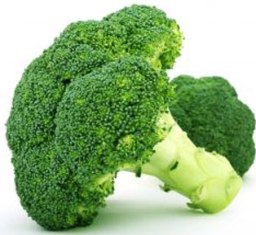Why would anyone choose to consider curing cancer alternatively or to look for a natural cure for cancer, either in the place of the officially recommended chemotherapy, radiation and surgery? The main reason may be that conventional cancer treatment is still far from reaching its long sought-after victory over cancer, even after decades of intensive research into which billions of dollars have been poured. On the contrary, cancer incidence and mortality have continued to steadily and dramatically rise in the Westernized world, with no end to this tendency in sight.
We believe one reason for this lack of progress is that traditional therapies do not destroy cancer stem cells. Cancer stem cells are the small number of cells within a tumor that are capable of fueling the tumor’s growth. These cells generally represent fewer than 5 percent of all cells in a tumor. Current chemo or radiation does not work against cancer stem cells, which is why cancer recurs and spreads. Instead of trying to kill all the cells in a tumor with chemo or radiation, we believe it would be more effective to use treatments targeted directly at these cancer stem cells. If the stem cells were eliminated, the cancer would be unable to grow and spread to other locations in the body. The cancer stem cells elimination is key to controlling cancer.
 Broccoli sprouts contain sulforaphane, a substance that has anti-bacterial, anti-inflammatory and anti-cancer properties. Sulforaphane is found in cruciferous vegetables such as brussel sprouts, cauliflower, bokchoy, kale, broccoli, cabbage, collards, kohlrabi, mustard, turnip, radish, and watercress. Sulforaphane is a potent inducer of protective enzymes that provide defense against cancer-causing chemicals. Eating more broccoli and other cruciferous vegetables is associated with a lower risk of cancer.
Broccoli sprouts contain sulforaphane, a substance that has anti-bacterial, anti-inflammatory and anti-cancer properties. Sulforaphane is found in cruciferous vegetables such as brussel sprouts, cauliflower, bokchoy, kale, broccoli, cabbage, collards, kohlrabi, mustard, turnip, radish, and watercress. Sulforaphane is a potent inducer of protective enzymes that provide defense against cancer-causing chemicals. Eating more broccoli and other cruciferous vegetables is associated with a lower risk of cancer.
New NIH-funded study shows that sulforaphane targeted and killed the breast cancer stem cells and prevented new tumors from growing. Sulforaphane has been studied previously for its effects on cancer, but this study shows that its benefit is in inhibiting the breast cancer stem cells. This new insight suggests the potential of sulforaphane or broccoli extract to prevent or treat cancer by targeting the critical cancer stem cells, and suggests a potential new treatment that could be combined with other compounds such as Genistein, Parthenolide, Curcumin and Chemorine to target breast cancer stem cells. Developing treatments that effectively target the cancer stem cell population is essential for improving outcomes. Recent evidence suggests that sulforaphane acts by numerous other mechanisms. Sulforaphane induces cell cycle arrest and apoptosis in cancer cells, inhibits tubulin polymerization, activates checkpoint2 kinase, and inhibits histone deacetylase activity.
Sulforaphane, a dietary component of broccoli/broccoli sprouts, inhibits breast cancer stem cells.
Chemoprotection by sulforaphane: keep one eye beyond Keap1.
The concentrations of sulforaphane used in this study were higher than what can be achieved by eating broccoli or broccoli sprouts. Prior research suggests the concentrations needed to impact cancer can be absorbed by the body from the broccoli extract. Researchers are currently developing a method to extract and preserve sulforaphane and will be developing a clinical trial to test sulforaphane as a prevention and treatment for breast cancer. No clinical trial is currently available.
Broccoli sprouts contain 10 times the concentration of sulforaphane that mature broccoli does. Cooking reduces the levels of sulforaphane in broccoli. Consumption of raw broccoli resulted in faster absorption, higher bioavailability, and higher peak plasma amounts of sulforaphane, compared to cooked broccoli. However, keep in mind that there is a huge difference between the prevention and cure of cancer.
Sulforaphane is an excellent anti-cancer and anti-leukemia natural medicine. However, at low concentrations, it cannot kill cancer stem cells. At high concentrations, it can kill cancer and leukemia stem cells. If you eat a lot of broccoli, perhaps you cannot achieve that concentration. It’s achievable for the extract and the broccoli sprouts. While the extract is available in capsule form as a supplement, concentrations are unregulated and will vary. Researchers found that sulforaphane could not be detected in most of broccoli products, suggesting present commercial broccoli products having low quality.
Sulforaphane is practically insoluble in water and not suitable for human consumption. Unfortunately, dietary sulforaphane in supplement form didn’t help cancers due to extremely low solubility/bioavailability. There are several pharmacokinetic studies about sulforaphane’s low solubility/bioavailability, which means that most of what we swallow goes directly into our gastrointestinal area and is expelled. In order to introduce pure sulforaphane into the blood via absorption and maximize the activity of sulforaphane in the body, you have to use BroccoZym. BroccoZym is the only product in the world that has perfect solubility/bioavailability of high purity sulforaphane enough to induce death of the cancer stem cells. For many years now, BroccoZym has been used with great success on many terminally ill patients. Otherwise, sulforaphane wouldn’t have worked.